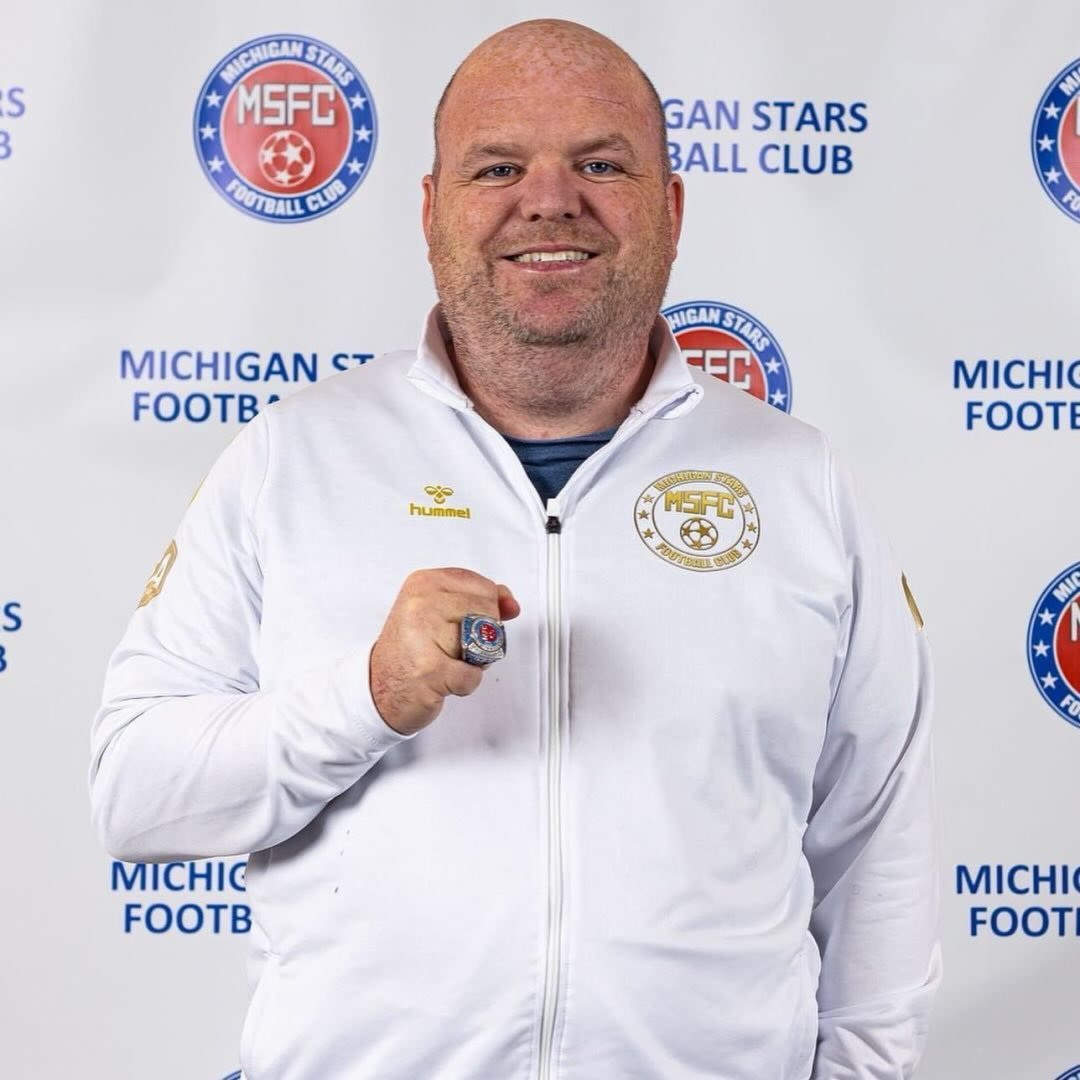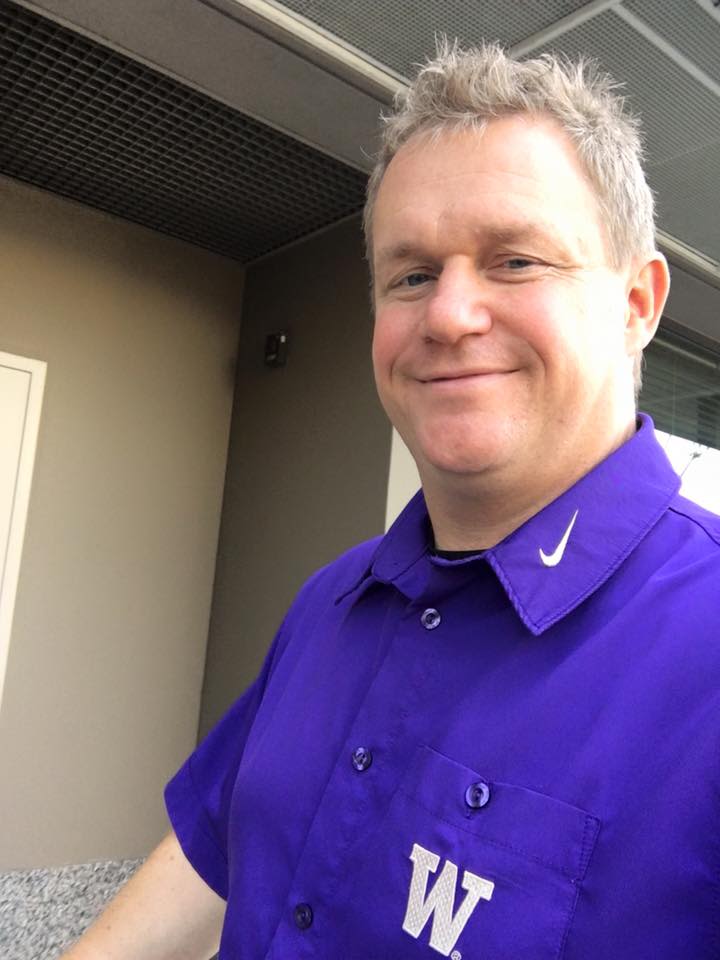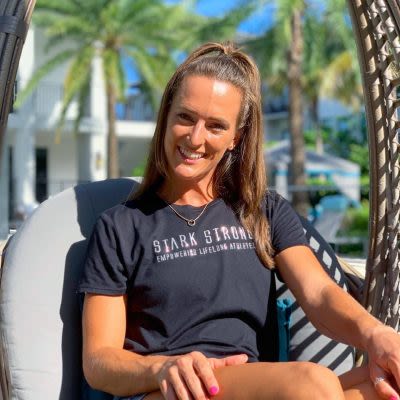
Note From The Publisher

First off, a note of thanks. We are celebrating 2 years of Soccer Parent Lifestyle Magazine! I want to thank each and every reader for your support. For out third year, we have some exciting things up our sleeve. Stat tuned!
For our 2nd Anniversary Special Edition, we decided to do something different. We asked people professionally involved in all different aspects 2 questions. Then we asked members of The Soccer Parent Lifestyle Facebook Group the same questions.
What is the biggest challenge facing American Youth Soccer Today?
If you were in charge of U.S. Soccer, what are 3 changes you would make to youth soccer to improve it?
We also asked soccer parents, team managers, and referees the same questions. The idea is to promote concrete solutions. Everybody has their complaints about youth soccer. What we need as soccer parents are solutions. This edition of Soccer Parent Lifestyle Magazine is a start.
Again, thank you to all our readers for a great 2 years, and buckle up for major soccer goodness coming to you in our 3rd year!

Buford Mobley
Publisher
What's Wrong With American Youth Soccer?
How Do We Fix it?

What is the biggest challenge for the American Youth Soccer System? If you were in charge of USSF, what are 3 changes you would make to improve the youth soccer system?

Lindsey Huie, Founder of Gritness, Youth Soccer Coach, Former USWNT Player
Lindsey Huie, Founder of Gritness, Youth Soccer Coach, Former USWNT Player
I hate to be so obvious here but I would say, and speaking from personal experience both as a player and now a coach, the financial demands here in the US for competitive soccer is astronomical. Some fees are the amount of a private school tuition. Players who simply cannot afford to participate are forced stay at on a non competitive platform or obtain a scholarship.
Take Maria Sanchez for example. She is currently the highest paid player in the NWSL at the moment. Maria couldn’t afford to play club soccer so she played with her brother’s team who was 6 years older than her. She played high school soccer, where she was initially discovered, and that became her exposure for college soccer. She went on to play at Idaho State, transferred to Santa Clara, and played for the Mexican National Youth teams and now Senior team. Maria is the exception, she paved her own way, broke into middle school gyms to train and played amidst a sea of boys to follow her love of the game. How many other Maria’s are we leaving out of the game due to the exorbitant cost of competitive soccer? How much talent are we missing??? How can we strengthen our Youth System here if we are by and large leaving out a number of talented players who simply cannot afford the platform but can certainly ball with the best of them?!
First thing I would change is requiring all coaches to take a basic psychosocial course reflective of the ages they will be coaching. It is critical that our coaches know and understand the developmental stage their audience is at. If we understand what is emotionally and mentally appropriate for players' ages we can better target different methodologies in coaching both on field play and mental strengthening and resilience.
Second change, would be implementing a curriculum structure all our competitive teams use as a standard would also help to ensure that at our youngest ages we are not missing the most fundamental pieces of the game. I’m unaware of how other states run their youngest ages but here in CA we do not keep or track scores, which therefore encourages teams, players and parents to be less win/loss oriented and more focused on development. If we have a curriculum that breaks down components into mental (tactically), physical (technically), and soccer IQ we can ensure that all our ages are meeting the basics across the country in each domain.
Last change I would make would be that we build “backwards”. Our youngest teams should be coached by our most experienced and successful coaches. This is a critical age in development and often the most difficult to coach. While many talented coaches enjoy coaching the older ages where more skills are achieved and a higher level of soccer sophistication can take place, it is actually our youngest ages that need the proper foundation. Many coaches have a population of players they connect to, given that many experienced and successful coaches tend to avoid the youngest ages, I would implement a mandatory mentorship program where our experienced and successful coaches are required to mentor our up and coming young or inexperienced coaches who tend to take the youngest ages.

Stewart Flaherty, Head Coach at Naples FC
Stewart Flaherty, Head Coach at Naples FC
I think the same free market forces that make America so great in so many ways means America has fragmented itself too much in the youth Soccer landscape. The required model of recognized and accepted tiers with clubs priding themselves on moving players up the ladder like Minor League Baseball players through a system can't thrive when people lose out economically or have their living tied up in making their level seem the best (whether it is or not). The English model of the FA and a recognized tiering system is the goal, but not feasible in the USA as people will not accept being lower tier. This allows a culture of marketing, propaganda and deliberately polarizing philosophies to thrive. Good for economics, not for player development.
1. Impose roster caps and do all I could to prevent fancily named 'B and C' teams from the same club. This puts pressure on a given club to maximize a product delivered to a given age group and focus on depth of development over surface level mentorship of 40-50 players.
2. Mandate geographic competition. Regardless of league label, clubs should always face teams in and around them. We have cities where teams travel 2 hours routinely ofr games but never face the teams from the same city for fear of losing or being 'less than.' Disingenuous way to run a Sports team and unfair burden on families.
3. Fund regional programs to provide video footage form a platform like HUDL to teams who cannot economically attend college showcase tournaments. Market and stream 'college days' where all teams play to make exposure for these kids higher. College staffs won't spend money on perceived lower ranked leagues, they will watch from their laptop. This may also deincentivise sitting the bench at a club for exposure reasons.

Dillon Powers, Pro Soccer Player, Orange County SC
Dillon Powers, Pro Soccer Player, Orange County SC
1. I would build a program to subsidize playing fees to reduce the financial burden of participating and ideally maintaining a higher number of kids playing.
2. I would try to create a clear and unified pyramid structure or funnel so that players know where they stand and what the pathways look like.
3. I’d institute split seasons with different intentions. One being prioritizing winning, competition, structure, tactics (the serious side of the game that matters in professional levels) and the other season I would prioritize creativity and play. It would be about trying things, exploration, and being inventive. I don’t think there is enough room for that at the moment.

Greg McGreevy, Chairman Pacific FC Alliance
Greg McGreevy, Chairman Pacific FC Alliance
The biggest issue with youth soccer in the US is a lack of vision for what is both good for building talented players and is also good for kids. We have no culture built around the game and have defaulted to a fractured system that tells parents professionalizing their kids at way to young and age is the problem. Layer that with the mentality that player development is measured in team wins and we have a system that costs a lot but isn’t able to produce real world class players at a reasonable rate nor is able to build the love and understanding of the game with a broader audience. Failure in most aspects.
1) return almost all soccer in the us to Sept1-Aug31 age bands so players are with classmates. Alignment with the school year is integral to American sports
2) move to eliminate almost all “platforms” and alphabet soup and rebuild leagues from the ground up so that stronger recreational leagues can be built and players at all levels can be better served.
3) redraft an education program that includes parent education and move toward a more open and accessible coach Ed and away from the elitism that permeates US Soccer
If I could have a 4th it would be to work on a national identity around player development that emphasized technical skills 1v1, 2v2, 3v3 for much longer and worried about physical dominance, tactical positioning and winning games at older ages. Unless we fix our program for developing players we won’t ever be relevant globally.

Laura Stark, Stark Strong Performance and Training
Laura Stark, Stark Strong Performance and Training
Question 1:
From the perspective of a Performance Coach specializing in speed development and injury prevention, I believe the most pressing problem American youth soccer faces is the pervasive issue of overtraining. This issue is multifaceted, contributing to increased burnout and a troubling rise in injuries among young athletes.
Overtraining: A Pathway to Burnout and Injuries
Overtraining is a significant concern because it leads to both physical and mental fatigue. Youth athletes are often subjected to rigorous training schedules that leave little room for rest and recovery. This relentless approach can result in:
- Burnout: The constant pressure and lack of variety can drain the enthusiasm and joy that young players have for the sport. Burnout is not just a physical state but also a psychological one, where the athlete may lose interest in the sport entirely.
- Injuries: The data is clear—engaging in the same sport year-round drastically increases the risk of injury. Young bodies need time to rest and recuperate or even cross train with other movements. Overuse injuries, such as stress fractures, tendinitis, and growth plate injuries, are becoming alarmingly common.
The Importance of Rest, Recovery, and Cross-Training
Rest, recovery, and cross training are crucial for the physical development and long-term health of youth athletes. Incorporating periods of rest and engaging in different sports (cross-training) can provide the following benefits:
- Injury Prevention: Different sports use different muscle groups and movement patterns, which helps in balanced physical development and reduces the risk of overuse injuries.
- Enhanced Performance: Cross-training can improve overall athleticism, leading to better performance in the primary sport.
- Mental Freshness: Engaging in various activities can keep the athlete mentally fresh and motivated, reducing the risk of burnout.
The Dilemma: Doing What's Asked vs. Doing What's Right
One of the toughest challenges parents and young athletes face is the decision between adhering to the demands of coaches, clubs, and teams or doing what's best for the athlete's long-term well-being. The pressure to specialize early and train intensively often conflicts with what is known to be beneficial for young athletes.
Possible Solutions:
- Education and Awareness: Educating coaches, parents, and athletes about the risks of overtraining and the benefits of rest and cross-training is essential.
- Policy Changes: Implementing guidelines that encourage periods of rest and promote multi-sport participation can help mitigate the issue.
- Open Dialogue: Encouraging open communication between all stakeholders—clubs, coaches, parents, and athletes—can lead to more balanced and athlete-centered training programs.
In conclusion, while the culture of youth soccer in America is heavily focused on year-round training and early specialization, it's imperative to recognize and address the risks associated with overtraining. By prioritizing rest, recovery, and a diversified approach to athletic development, we can help young athletes achieve their full potential while safeguarding their health and well-being.
As a Performance Coach specializing in speed development and injury prevention, if I were in charge of U.S. Soccer, I would implement the following three changes to improve youth soccer:
1. Promote Multi-Sport Participation
Initiative: Implement policies and programs that encourage young athletes to participate in multiple sports throughout the year.
Action Steps:
- Guidelines for Clubs and Coaches: Establish clear guidelines that limit year-round participation in soccer, encouraging athletes to take breaks and engage in other sports.
- Educational Campaigns: Launch educational campaigns targeting parents, athletes, and coaches to highlight the benefits of multi-sport participation, including reduced injury risk and improved overall athletic development.
- Collaborations with Other Sports Organizations: Partner with organizations from other sports to create joint programs and camps that promote cross-training and holistic athletic development.
2. Comprehensive Coach Education
Initiative: Develop and mandate comprehensive educational programs for coaches focusing on game preparation, injury prevention, and athlete development.
Action Steps:
- Certification Programs: Require all coaches to complete certification programs that cover topics such as injury prevention, proper training techniques, and athlete mental health.
- Ongoing Professional Development: Implement continuous professional development opportunities, including workshops, seminars, and online courses, to keep coaches updated on the latest research and best practices.
- Resource Centers: Establish resource centers that provide access to training materials, expert advice, and support networks for coaches at all levels.
3. Athlete-Centered Development Focus
Initiative: Shift the focus from winning to development, ensuring that the interests and well-being of athletes are prioritized.
Action Steps:
- Development Over Results: Encourage a culture that values skill development, personal growth, and enjoyment of the sport over immediate competitive success.
- Individualized Training Plans: Promote the creation of individualized training plans that cater to the unique needs and goals of each athlete, considering their physical, mental, and emotional development.
- Feedback Systems: Implement regular feedback systems that involve athletes in the decision-making process, ensuring their voices are heard and their needs are met.
By implementing these changes, U.S. Soccer can foster a healthier, more sustainable environment for youth athletes, allowing them to enjoy the sport, develop their skills, and achieve their full potential while minimizing the risk of burnout and injury.

Tory Key, Founder Pitch Invaders
Tory Key, Founder Pitch Invaders
The most pressing problem facing American youth soccer is its lack of accessibility and visibility in underserved communities. Soccer has the potential to be a unifying and empowering sport, but many young athletes in the United States, especially those from lower-income areas, simply don't have the same opportunities to engage with the game at a high level. High costs associated with club fees, travel, and more often make participation prohibitive for many families.
To truly address this issue, U.S. soccer needs to focus on making the sport more affordable and inclusive. By investing in grassroots programs and community-based soccer initiatives, we can help break down these financial barriers and ensure that talented players from all backgrounds have the chance to develop their skills and compete. These efforts would not only foster a more diverse and competitive soccer landscape but also enrich the lives of countless young athletes.
Additionally, we need to leverage the influence of popular stars and celebrities to promote soccer among young people. When kids see their favorite athletes and celebrities endorsing soccer, it can significantly boost the sport's appeal and inspire them to give it a try. High-profile endorsements, engaging social media campaigns, and collaborations with well-known figures can help elevate soccer's visibility and make it a more attractive option for youth across the nation.

Koach Karl Dewazien, Founder FUNdamental Soccer
Koach Karl Dewazien, Founder FUNdamental Soccer
Reducing the dropout rate of young players, currently between 70% and 75%, by their teen years.

Teesta Sullivan, Founder Soccer Talented
Teesta Sullivan, Founder Soccer Talented
The biggest challenge for the American youth soccer system is the "High Costs and Accessibility" associated with the pay-to-play model.
High Costs and Accessibility
Why It’s the Biggest Challenge:
The high costs of participation fees, equipment, and travel make soccer inaccessible to many children, especially those from low-income families. Lowering costs would increase participation rates, leading to a larger and more diverse talent pool.
If I were in charge of the United States Soccer Federation (USSF), here are three changes I would make to improve the youth soccer system:
1. Promote a Development-First Approach
Goal: Focus on long-term player development over winning games.
Steps:
- Player-Centric Programs: Design programs that prioritize skill development, game intelligence, and creativity.
- Development Leagues: Create leagues that emphasize growth and learning rather than competition.
- Small-Sided Games: Promote small-sided games for younger age groups to increase touches and involvement.
2. Create Clear Talent Pathways
Goal: Establish clear and accessible pathways for talented players to progress.
Steps:
- Regional Development Centers: Develop regional training centers to provide advanced training and exposure.
- Scouting Networks: Build robust scouting networks to identify talent across diverse regions.
- Integration with Professional Clubs: Strengthen ties between youth programs and professional clubs for smoother transitions.
3. Encourage Informal Play and Pickup Games
Goal: Foster a culture of informal play to develop creativity and love for the game.
Steps:
- Accessible Play Spaces: Create and maintain community fields and open spaces for free play.
- School and Community Programs: Encourage schools and community centers to support informal soccer games.
- Minimize Adult Intervention: Educate parents and coaches on the benefits of allowing kids to organize and play independently.

Neil Crawford, Founder Anytime Soccer Training
Neil Crawford, Founder Anytime Soccer Training
If you're as passionate about youth soccer as I am, you've probably noticed some of the persistent issues in American soccer. The early exit of the U.S. Men's National Team from the 2024 Copa América, failing to advance past the group stage against smaller nations like Panama, is a stark reminder of these challenges.
Despite some recent improvements, like qualifying for the 2022 FIFA World Cup in Qatar and reaching the round of 16, the U.S. still underperforms on the global stage. This is puzzling, given our country's large population, high participation rates, abundant resources, and several players competing in Europe.
From my experiences living in Europe, Africa, and Asia, and through conversations with soccer's top minds on the Inside Scoop Podcast, I've gained valuable insights into the hurdles U.S. soccer faces.
This article is my way of sharing some ideas and highlighting the major challenges in U.S. youth soccer. While it’s not a comprehensive solution, I hope it can spark a meaningful conversation.
As a concerned parent and volunteer coach who loves the game, my goal is to share ideas and contribute to making the future of U.S. soccer better for my sons and everyone who loves this sport.
If you want to learn more, download my free ebook, “Monopoly: Addressing Youth Soccer in the US - Challenges and Ideas from a Soccer Parent."
Before We Begin: Understanding the Underlying Issues in U.S. Soccer
Before we jump into the topic, I want to clear something up: I don't believe the issues in U.S. soccer are mainly about greed or people trying to profit off parents. It's often said that the problems come from an excessive focus on winning games or making money, but it's more complicated than that.
Most individuals involved in youth soccer are doing the best job they can with the resources they have. Coaches, administrators, and volunteers are generally well-intentioned and passionate about the sport. They aim to provide the best possible experiences for young athletes.
The real challenges lie in organization, cultural norms, execution, and perverse incentives.
Organization
The structure of youth soccer in the U.S. is all over the place, with multiple leagues and organizations operating independently. Without coordination among local entities and the guidance and transparency provided by U.S. Soccer Federation (USSF), we see multiple leagues, a lack of transparency, infighting, and parents and players opting for brand-name clubs over what might be better for development.
This fragmentation leads to inconsistencies in training methods, competition levels, and player development pathways, ultimately resulting in duplicated efforts and missed opportunities for a more holistic development approach.
Cultural Norms
In the U.S., youth sports, including soccer, basketball, and baseball, often see more parental involvement and higher expectations from their clubs than in other countries. The capitalistic influences and cultural differences shape how these sports are taught, the programs available, and the priorities of the USSF and its member organizations.
There’s a heavy emphasis on structured games and tournaments, which puts pressure on coaches to win and limits the natural development of creativity and problem-solving skills. This focus on highly organized, ultra-competitive events can stifle the more spontaneous, free-form aspects of the game that are crucial for nurturing young athletes.
Execution
Even when everyone has the best intentions, soccer programs can still fall short. Many started out as recreational leagues but are now trying to meet parent demands for more serious club soccer. It’s like a car manufacturer trying to produce luxury sedans, SUVs, and economy cars all in the same factory with the same processes.
While everyone promises great development, some can’t deliver on that promise consistently due to their current setup. This often means limited resources, varying levels of coaching expertise, and differing priorities, which end up impacting the quality and consistency of soccer training and development.
Perverse Incentives
Our club soccer formats often put coaches and clubs under intense pressure to deliver quick results, like winning games, even though player development is a long-term process. With soccer results being public and parents watching closely, there's an inherent pressure to show immediate success in order to keep and recruit players. It's important to remember that this isn't necessarily the result of individuals making selfish decisions; rather, they are acting normally given the situation, incentives, and constraints. This win-at-all-costs mentality can get in the way of long-term growth, as the focus shifts from nurturing skills to achieving short-term victories.
Lack of Accountability Standards
Youth soccer has often struggled with a lack of accountability standards and benchmarks for coaches and clubs. While technology has made it easier to track objective metrics, the real challenge is changing mindsets and overcoming defensiveness.
Clear metrics are crucial for tracking progress and meeting developmental goals effectively. Establishing accountability can help ensure that everyone involved is working towards the same objectives and making the most of their efforts.
By understanding these underlying issues, we can have more constructive conversations and steer clear of personal attacks and name-calling. Let’s focus on supporting our coaches and volunteers as we work together to make real improvements in U.S. soccer.
Key Challenges in US Youth Soccer: Our Big Rocks
All or Nothing: The Dilemma for Parents & Players
Unlike in countries with strong grassroots programs, many U.S. parents face a tough choice between expensive, competitive club soccer and basic recreational options. For kids who want more competition, there aren’t many valuable options in between.
While some programs attempt to fill this gap, they often lack crucial coach mentorship and technical support from USSF and don't have access to a transparent league structure. This situation artificially drives up the cost of competitive soccer, drains talent and volunteer coaches from recreational programs, and ends up watering down the quality of competitive programs.
The Dominance of Mega Clubs
From what I’ve seen, U.S. youth soccer is often ruled by mega clubs and exclusive leagues that put their own interests first instead of fostering a transparent and inclusive system. This puts pressure on players and parents to pick clubs based on their reputation and connections, rather than what’s truly best for player development.
The Absence of Unstructured Play
In a country where soccer isn't the top sport, the U.S. misses out on a strong soccer culture where kids would naturally engage in unstructured play like futsal or street soccer. Instead, their involvement is mostly limited to organized activities. As Johan Cruyff famously said, “In street soccer, you learn how to play the game. You learn how to play the game of football with your friends in the streets, and that’s where you get the best education.”
Soccer requires a lot of time and many hours of practice beyond structured team training. Without these informal, spontaneous play opportunities, many kids miss out on developing their skills in a relaxed, natural setting, which is crucial for truly mastering the game.
The Pitfalls of the Pay-to-Play Model
The pay-to-play model, combined with high parental expectations, drives clubs to recruit aggressively and market through flashy games and tournaments. This often leads to higher costs, less focus on training, and extensive travel, overshadowing player development and limiting access.
Beyond the financial burden, the model creates significant barriers. Practices often start early, making it hard for working-class families to attend, and fields are frequently far from urban areas. Travel and scheduling demands can be overwhelming for single-parent families, and the sport remains dominated by upper-middle-class families, adding another layer of exclusivity.
The Impact of No Promotion/Relegation
Without a promotion/relegation system, we miss out on a key aspect of global soccer that drives competition and growth. This lack of movement between levels limits club opportunities and stifles investment in youth academies, which are crucial for developing talent and diversifying the sport.
The static structure we have discourages clubs from investing in long-term development because there’s no real incentive to build strong youth programs that could eventually compete at higher levels.
Recommendations for Change
1. Unified and Transparent Pyramid Structure
I believe U.S. soccer could really benefit from a unified and transparent pyramid structure that's open to all clubs. Independent operators, like U.S. Club Soccer, could handle the elite-level programming, while state and regional bodies focus on grassroots development and leagues.
At the top, Major League Soccer (MLS) could provide leadership, with a promotion and relegation system enhancing competition and creating more opportunities at every level. This kind of structure would encourage investment in youth development and offer a clear path for players to advance through the ranks.
2. Affordable Hybrid Models
Given the strong demand for club soccer in the U.S., we need to offer programs that strike a balance between recreational and high-level club options. This could involve creating hybrid models that mix parent volunteers with paid coaches and include competitive gaming programs.
Plus, having a clear and transparent league structure with well-defined levels of competition will help reduce the need for more club teams at the same level as more affordable options. This clarity will make it easier for parents to see the true value of different soccer programs and make better choices for their kids.
3. Separate Elite Programs with Accountability
I think U.S. Soccer should require clubs to set up separate, independent organizations for their elite programs. These organizations would have more focus and autonomy to operate effectively.
We should also set size limits for these programs and make sure there are requirements for coach mentorship and professional development, with oversight from U.S. Soccer.
By establishing clear, universally recognized levels in youth soccer and supporting them with a structured pyramid, we can improve transparency. This way, program labels are based on consistent standards rather than just marketing and commercial interests.
4. Promotion and Relegation: A Path to Greater Opportunity
Introduce promotion and relegation at the youth and semi-pro levels to align with the global standard and give all clubs a fair chance to advance to the MLS and Championship levels.
At the professional level, adopt a hybrid approach by grandfathering existing MLS clubs for the next 10 years. This decade-long transition will ensure their financial stability while we establish a relegation parachute fund to support clubs facing relegation, aligning our system with the rest of the world while protecting the viability of current MLS teams.
Additionally, USSF should collaborate with partner organizations to raise investment funds aimed at supporting smaller clubs in larger cities with the potential to ascend to the MLS. This support will help foster growth and ensure a more competitive and dynamic league structure.
5. The US Needs a Unified and Inclusive Scouting System
We need a scouting system in the U.S. that’s club-neutral, so every young player has a fair shot, no matter which club they’re with. This way, parents and players can focus on choosing clubs that prioritize development over just chasing exposure.
To make this happen, regional camps should be run by coaches from MLS, ODP, US Club Soccer ID2, and the national team. Germany’s “Talent Development Programme” offers valuable insights here. After their 2002 World Cup defeat to Brazil, they established regional development bases to provide equal access to training and scouting for young players.
Adopting a similar model would ensure that talent from all clubs is recognized and nurtured, creating a more effective and inclusive system that truly taps into the potential of American soccer talent.
Conclusion
Thanks so much for reading. These are just a few of the ideas I discuss in my free eBook, “Monopoly: Addressing Youth Soccer in the US - Challenges and Ideas from a Soccer Parent."
I wanted to capture the essence that addressing the challenges in U.S. youth soccer requires a multifaceted approach, not just a simplistic moral or ethical dilemma. This involves organizational and industry restructuring, shifts in cultural attitudes, and a focus on long-term development over short-term success.
By embracing this comprehensive perspective, we can create a more inclusive, transparent, and effective youth soccer system that nurtures talent and fosters a love for the game in future generations.

In my honest opinion I think there’s two major issues, one from an organizational standpoint and the other from a physical development perspective. Because that’s where my expertise lies.
Let’s face it, the “Pay to Play” model hurts more than it helps, and it’s getting more and more ridiculous every year. The cost of tryouts, uniforms, tournaments, travel, and lodging…it’s likely more than what you would pay for your child to attend university when you take into account just how many years kids spend with these “elite” club teams. And that used to be the “justification” to spend now; as an investment for a potential college scholarship.
But with new rulings coming down in the next couple of years, it sounds like rosters are going to be massively cut for the sport of soccer at the NCAA level, and with that, the number of full/partial scholarships. So if you’re thinking of your child’s soccer career as an investment and not a means for development, sorry but the statistics don’t favor that outlook.
Each week I talk to a player playing in a different league, all of which claim to be “ELITE”. ECNL, ODP, National League, MLS Next, academies. It’s overwhelming to try to keep track of. And with the rise of so many “Elite” programs, come a number of swindlers promising the best training, the best coaches, the best development, etc and all they really care about is lining their pockets. I’m thinking of all the European Elites who are seemingly popping up with multiple satellite youth setups across the US.
Listen, I grew up in an urban environment where we played for our local town and played against other teams around the NE Pennsylvania (Philadelphia) area. We probably played 3-4 tournaments in a year. And they meant something because we got to play some teams from out of state. It was exciting, and something to look forward to.
Those days are long gone. Now it’s a tournament or ID camp every week. Kids are getting poached at 7, 8, 9 years old to bounce to another club or go into club settings where things become so structured, they lose the freedom and love for the game.
The reason I’m so in love with the game now is because I loved playing it as a kid. It was fun, it was competitive, we had a great team, and it gave me friends that I have to this day.
Nowadays I feel like the eye is on the wrong prize. I’m not saying there shouldn’t be pathways into the elite model, I’m just saying it’s not the option for the population at large. And I think there needs to be a resurgence in the local community soccer teams, clubs where you learn to play, love the game and develop those long lasting relationships. With the game and with other teammates.
This model also doesn’t exclude those who don’t have the means to fork out over $1000 just on training kit, let alone all the other added costs. And my fear is that we’re missing out on unearthing some really hidden gems that can’t afford the structured model. Youth sports after all has become a MASSIVE business that generates a ton of money. But at the same time misses the mark on their most important purpose, developing better athletes, and humans.
So for me, increasing access by growing the local grassroots clubs, leagues and high schools would be a huge step in the right direction. I also think bringing back the idea of free-play and establishing a culture where kids can play their sports without the confines of organization will go a long way in developing more creative, problem solvers and players. Think of the street/pickup culture of basketball here in the States and how worldwide, that’s how it is with soccer.
Bring that model into the US, have kids play without rules or with rules they make up and watch our talent pool skyrocket.
Sheesh I didn’t expect to have that much there so my second point I’ll keep simple. The other issue is clearly the early specialization into one sport and how it limits creating well rounded, versatile athletes.
You can look back at nearly any of my articles and recognize I’m a huge proponent of kids playing multiple sports up to and even through high school as well as the idea of long term athletic development. Pinning them into one sport for the entirety of their youth robs them of varied exposures, developmental patterns, and movement possibilities. And also increases the likelihood of them getting injured or burning out.
Let them explore, let them have fun, and let them try all the things. Chances are that they’ll be much better athletes and have much wider life experiences going that route.
Change #1: Re-invest in the grassroots soccer communities including supporting local clubs, schools & the growth of pickup culture (building community futsal courts/green areas/etc instead of funneling all of their money into the elite “MLS Next” programs. These programs can limit the financial burden that comes with travel, camps, etc.
After all, nothing drives me more crazy than hearing one of my soccer players say they traveled to a completely different state just to play a team from a few towns over. Wild.
Establishing a robust scholarship and grant program that provides financial assistance to talented young players from low-income families would also be ideal. This program would cover club fees, travel expenses, and equipment costs making the game more inclusive and accessible. It would also allow the USSF to tap into a broader talent pool and ensure that financial constraints do not hinder the development of promising players.
Change #2: Focus on Long-Term Athletic Development (LTAD) programs that include participation in OTHER sports. This would enhance the athletic and technical development of young players through a structured, holistic approach using the game as a means of fostering lifelong movement. These programs would emphasize age-appropriate training, focusing on movement variety, resistance training, and sport-specific skills as players progress through different developmental stages. This structured approach would help develop well-rounded athletes, reduce the risk of overuse injuries, and foster a lifelong love for physical activity.
Change #3: Increase Access to Quality Coaching and Facilities.
The last change I would propose is to invest in the development and training of coaches, ensuring they are well-versed in the principles of LTAD, sports science and principles of youth development. This is especially where I feel Europe and the rest of the world has the edge on us. They approach youth sports as a means for development and participation rather than one that’s all about winning.
Almost everywhere else there are more open parks, courts, that help foster that free play/pickup culture. Here in the States, clubs are locking up their goals in the summer. By limiting access, we’re limiting access to the game and therefore the development of the pickup culture that will see it flourish through the growth of more creative players.
These are just some ideas from someone who is involved in the game in many facets from treating and training athletes to coaching. Most importantly they’re from a massive fan of the game and someone who wants to see the game explode leading up to and after the 2026 World Cup here. Can’t wait to hear what others have to say on the topic.
What's Wrong With American Youth Soccer?
How Do We Fix it?

Brian Machatka, volunteer coach and travel dad
Club fees and costs. Most kids cant afford travel soccer or can barely, so steer towards other sports. Many top kids don't get the chance to play or advance due to these high costs or not enough exposure to the game
Make soccer available to everyone regardless of income. Offer more free clinics, training programs and other opportunities to get kids interested in soccer. Free or highly reduced kids tickets to MLS and an other soccer games or tournaments. Get them to love the game.
Matt Baehr, Club board member, coach, parent
Money that leads to focus on winning instead of development
Making coaching education much more widely available and cheaper for all to attain. Implement more standards around youth leagues to help tamper down costs and travel. Implement true promotion/relegation, training compensation, etc. to match the rest of the world to help promote investment.
Michael Teahan, Club Registrar, Team Manager
Obsession with athleticism over development
Make all competition regional except national championships, merge organizations and impose promotion and relegation at the team level, more effort into talent ID for individual players with off season regional team opportunities for selected players
Alto Edwards, Team manager
No clear path to the professional level. There's always some alphabet division but it still always seems to come down to who you know, and if that's the case then that needs to be made abundantly clear as opposed to adding more letters and selling a pipe dream to the masses.
A lower price point even for "high level" play.
A more uniform style of training that allows American players to understand what it means to play European fútbol.
More true sponsorship for Academy teams as the actual path to professional level play.
Sarah Brown, HS coach and manager for club team
Cost efficiency
Teach fundamentals early and game play later, stop with the outrageous cost that keeps low income highly athletic players away and more futsal/indoor opportunities for all ages.
James Hope, Operations director of Urban Champions Academy in San Antonio
The total cost involved under the pay to play model. Scholarships are only for the elite players. Even then the scholarship doesn't cover the transportation, hotels and Food for players when the play games outside their cities. There are enough teams to play locally but with so many different leagues under different organizations the teams are spread out in different organizations from ECNL, NPL, NATIONAL 64, State premier etc.
1. Consolidate divisions and levels under one umbrella organization. This allows teams to stay local thus cutting cost. Especially for 14U and below Teams are not neccessarily better in other cities.
2. Non profit organizations must offer equal number of scholarships to the elite players as their are to recreational players.
3. Require coaches to be licensed their state associations or national organizations to coach the level of their license. Waivers can be given in areas where their may be shortages but these are temporary and are required to coach. Just like teachers are required ro have lia license. Plus the license must be affordable.
Raisa, Team Manager, Parent, Prior Military
Lack of technical skills or soccer IQ. Coaches seem to favor physical size rather than skills
1. Create healthy boundaries between coaches/club members and parents. Parents have WAY too much control. It’s not pay to play. If you are a parent and you/your child is not making the “team” they are on a priority, coaches/club should enforce minutes of play lost, even to those “outstanding” players.
2. Have ACTUAL, with set standards for player evaluations/ tryouts. However long the tryouts need to be and have a set standard. For example, by “x” age they should be able to do “x” and it should be a go/no go. And have the ability to share that with those who are trying out so they know what they need to work on. I don’t know if people have never heard this before but it’s okay if a player who was previously on a team to be cut if there are better players. Remember, these kids will not be children forever, and they have to understand that if they are not qualified for that team/job, those who are more qualified SHOULD earn that spot. There are too many teen players who cannot pass, cannot dribble, and do not have a lick of soccer IQ. Also, there are to many older players who think they are the best, but when standards are set, and they don’t measure up, they can’t handle the failure and quit.
3. Clubs say they have scholarships, I have never heard of anyone actually being offered that. There needs to be a cohesive system where the local city leagues and clubs work together to find those players who can’t afford or their parents aren’t aware. That is where the hidden talent is.
4. (I know you said 3 but this one is also important). Let the younger kids have fun. Provide a free pickup street soccer/indoor soccer/ small sided events where the kids bring back what we had as kids. Free play where they can try out new moves, or learn new moves.
Sarah O'Connor, Parent/previous club vice president
Too many leagues. We have new leagues starting every time you turn around. We don’t really have a foundation for our youth. We have made it about the money, for clubs.
1. Not so many leagues.
2. We have a foundation (a program pathway) for our coaches to get licensed but we have nothing for our players. We have no pathway for players that works. I feel this mainly because we don’t have a real system for them.
3. Stop charging for everything. If we want to keep up with everyone we need to do better. We really do have some talent but not everyone can pay so much.
Jay McClenahan, A little of everything... coach, trainer, administrator, referee, and soccer dad!
The real answer is affordability. Outside of rec level soccer, it's a whirlwind of various pricing models. Why is one club $1000 for a year, and another 10 miles away $4000 a year? Add to that, the nonsense that goes along with it. Almost every club and every team labels itself as "elite". There's no longer a distinction between a good or great player and an elite player. How does a youth athlete - or their parents - decide which direction to go...or how good they really are, if all of them are elite? And, finally, because I could rant all day... Stop creating a "B" or "C" team just to bring in the income. And, parents, stop thinking you have to be on the "A" team. If you kid is having a great time, is playing some decent soccer, and is learning pivotal life lessons - who cares what letter team they're on?
First: I really would like to see a new system implemented across the country... 3 distinct levels in a pathway for a youth athlete... regardless of talent or level of play. Level 1: Focus on Fun (3 - 7 yrs old) Level 2: Focus on Fun & Development (8 - 14 yrs old) Level 3: Focus on Fun, Development, and Competition (15+ yrs old)
Second: Create/start and then grow a new Grassroots Fund. 5% of pro match tickets sales go into the fund ... 40% of funds can be donated to each state's soccer association, 40% to each state, but spread out between county rec soccer councils, and 20% used as grant money that smaller-sized clubs can apply for to complete various projects.
Third: A real zero tolerance system and campaign against referee abuse. This needs to start at the rec level - if it doesn't start there, it won't make it's way through the travel/club ranks.
Nicole Watson, Girls coach
Pay to play
1. Remove all the different youth Leagues (EDP, ECNL, Elite 64, MLSNext etc) and have one league
2. Make it affordable and accessible for all players
3. Start training at the local level with better unified coaches trainings that focus on fundamental skills
Alexandra Gorski, 8U Recreation Coach- second season, GU11 Travel Asst Coach 1st season.
Early player concept of the game
All season engagement programs to continue fostering development, enhancement of Recreation Programs, higher penalties for Coach/spectator inappropriate behavior
Michael Cheeney, Coach, club Admin, soccer store owner, parent
Incentivized development
Ensure solidarity payments are included within all levels of youth development
Limit elementary school age travel
Enhance adult participation through all participating state associations
Edson Peralta, Team manager
Is too expensive and too many leagues. Clubs are prioritizing the “money” first before the talent.
Control on cost for club soccer, full year players contract were can’t be accepted anywhere else mid term if player decides to change clubs. And reduce the amount of existing leagues.
Portland Campanaro, Mid State Representative SCYSA and soccer mom
No clear pathway to collegiate or professional soccer
Combine leagues making a clear pathway
Provide a way for those with less money to get involved and in the game
Improve development at younger ages
Mark Yocum, Soccer program head
The pay to play model of soccer
Standardize league fees across the country. Emphasize fundamentals of the game
Otis Marajah, Soccer Parent
Pay to play
1. Don't make club owner run legues
2. Promotion and relegation for all leagues
3. Eliminate pay to play
Dan Cohen, Full-time Director Of Operations
The ever-increasing costs, with seemingly no benefits or value for money.
1. One registration & league system, with promotion/relegation
2. State Play > Regional Play > National Play. Why are teams traveling HOURS for league games, past multiple competitive possibilities? 3. Multiple games per day should be banned.
Derek Veith, Coach
Over training, lack of time spent in free play
1. Clarify the pyramid structure in youth soccer in a way that rewards leagues that include promotion/regulation at a team level and provide financial assistance to those who need it.
2. Create a program that works to ensure access to open spaces for free play and a marketing campaign designed to promote free play as a critical part of player development.
3. Create a licensing/certification process for anyone providing individual training that ensures these trainers have completed the same safe sport/background check process that coaches/refs, etc. go through as well as emphasizes the importance of avoiding over training. Maintain a registry of these certified trainers.
Chrysten Foley, Coach
Barriers to access- cost, field space and knowledge of how to join. It complicated to learn about rec, then step up to try-outs and competitive programming, private trainers. Not only can that be expensive, but is often confusing.
Public access. In addition to basketball courts and tennis courts, public parks should have futsal, or even just a goal in a field.
National system that makes sense for player development. Instead of multiple states and leagues and the alphabet soup of competition. This will decrease confusion and barriers to entry.
Pay to play tournaments. Need to go.
Maya Thaxton, Coach and parent
It’s not a lot of assistance or representation for minorities whose families can’t afford to pay the big bucks. I know there are resources but in small areas they are far and few. The most talented players can’t be looked out if we continue to look in the same places.
The bias when it comes to certain teams Favoritism for home team during tournaments Paying for tryouts
Coach Jesse, Zone 1 Coach & Coach Educator
Lacking soccer culture—It's difficult to compete when many players and spectators view the sport as 3rd or 4th in popularity to other sports.
1. Increase grassroots courses accessibility and certifications.
2. Improve on and increase scouting opportunities.
3. Increase initiatives to have more street courts in parks and futsal facilities.
Kayla Payne, Youth team manager
Money is the main focus not player development
Restructure the club system
Create more grant based funding and options for low income children to have opportunities.
The issues come from the top down so the MLS and above would need to be reworked.
Jeremy McCall, Mental Performance Coach and mental health therapist for elite athletes in every sport.
Our athletes are more athletic than the rest of the world but we are far behind above the neck.
Add a professional mental performance coach or sports psych to every club and where appropriate, each team. They would teach strategy, enhance mental performance, and promote team cohesion.
Ian Steele, Coach, trainer, and parent
Entirely too much focus, at such young ages, on being at the “top clubs” with the high level “programs”. Not enough focus on Developmental/Recreational soccer. Playing Travel Soccer before 10 years old is a joke. I can’t even imagine how many gifted players we are losing due to burn out because they’ve been playing and training almost every day from 7 to 12. There are a very select few that want to do that, the others I’m concerned we are losing them because it becomes a chore instead of being fun.
No travel teams until 10 years old/U-11 at the earliest.
Much more focus on developing and progressing fundamentals at the “recreational”/“developmental level” with coaches that have completed at least some kind of training. From U6 to travel.
Invitation to MLS Next and other Elite leagues should be based on individual team performance and not based on the club. For example, if there is a very elite team for Club B they should be invited to that elite league regardless if the club has that “status”. No club should be awarded a certain status. Any team at any club that shows an elite level of play can be invited to compete in those higher level leagues.
Kary Yates, Parent
cost
Affordability, merit placement, open communication
Tim Meyer, Rec club Chair and Coach
The most pressing problem is the money hungry clubs, academy’s and summer camps. They are ruining the love for the game and focusing on profit over teaching the love for the game. Kids want to play, if it becomes a chore then they lose the joy of playing. When they lose the joy of play they don’t practice on their own or start pickup games with their friends. Kids need to want to play soccer like we used to want to play baseball, football or basketball with our friends. We played every day on our own without parents or coaches telling we had to. We learned from each other and from our own mistakes. Then we joined Rec teams or school teams and learned to play organized games.
I would take the money out of it and let the kids learn to play with open access to fields and equipment with the option to join Rec at very low cost. Get rid of professional referees until high school. Change the normal model of training from skill based to fun based organic practice through games. I would also stress to the kids and parents this is a full contact sport.
Travis M., Coach and Parent
Way to expensive. It's soccer. There are African kids playing with garbage bags balls and in the US it's 3-5k annually for what?
Make it about the development of youth soccer players not about marketing your kid to a D1 NCAA program
Daniel Langer, Director of Coaching, VP, B13 and B09 coach
Pay to play
More outreach required by MLS clubs. More ID camps at afford rates. A clear pathway (promotion relegation and all clubs playing under same umbrella of USYS)
Samantha, Team manager
Cost and dilution of clubs (too many)
Fund programs and not have all these leagues that only care about money and not development. More access for girls in the sport. Full approach to development with respective club including soccer training, mental health and fitness/strength training. Parents should not have to seek out all these other resources to help their kids develop. It should come from the club. Of course parents could always supplement but more of this needs to be provided by the clubs.
Christine McNamara, Parent
Talent identification as players mature. Don’t pigeon a kid when he’s 10 years old.
1) Obtain more lucrative sponsorship for players who have talent, but no money.
2) Increase professionalism, communication and discipline in the sport. Eliminate tournaments where players are playing two and three games a day.
3) Unify the sport and get rid of all the different ABC leagues and stop bringing non-rostered players to games.
Janine Holmes, Parent
All kids being allowed to play club teams as long as they pay.
Clubs would offer “soccer schools” and only after learning and developing they’d be put in a team. Surely they’d still be scrimmaging at the “school” level, but there would be no league play until players reach a detain skill level. Clubs would form teams based on player skills, basically choosing the best from the school. This would allow everyone to develop, push players to improve, and allow the best players to play with other on the same skill level.
